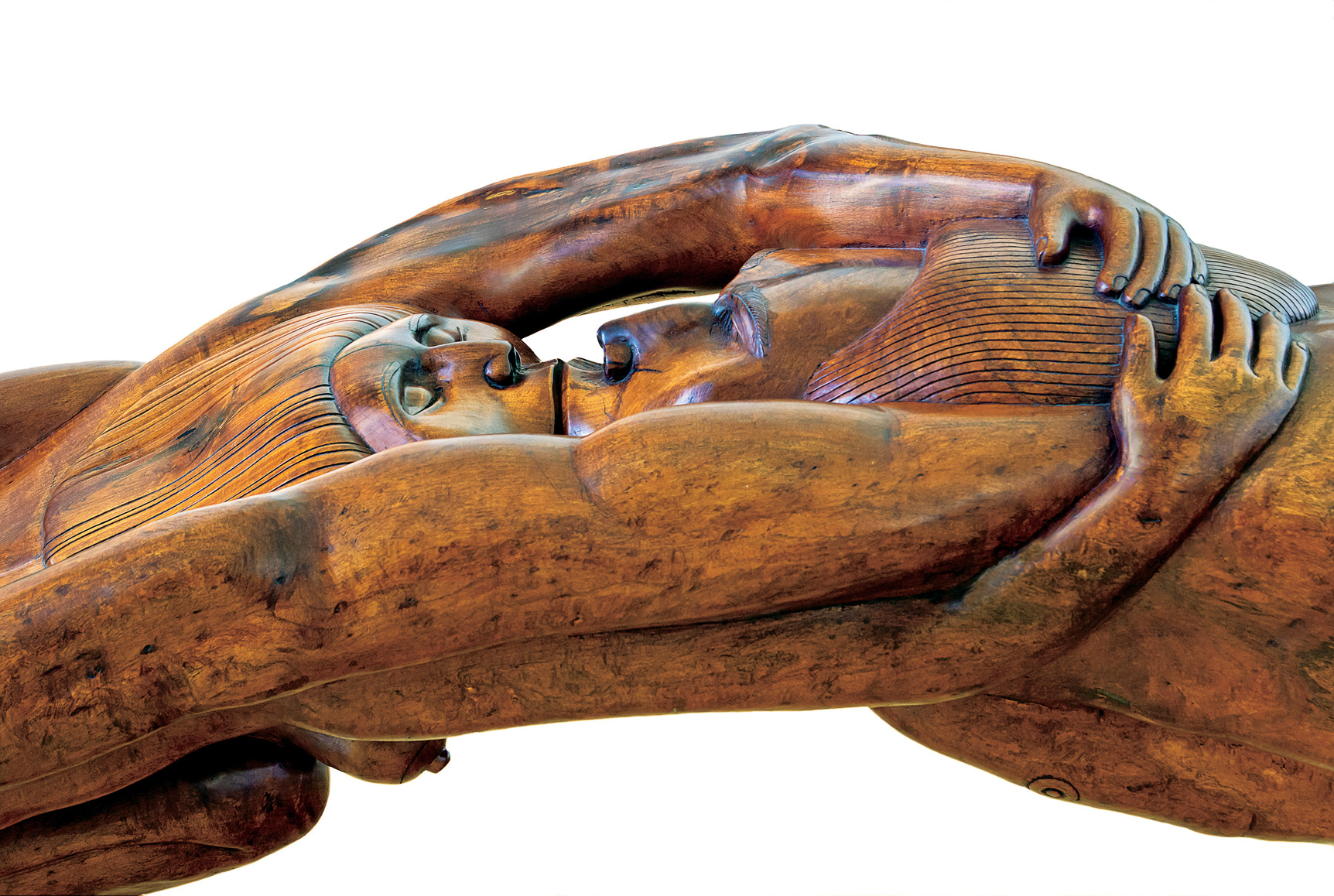



The San Antonio Museum of Art invited me to be part of a visitor’s guide that would highlight favorite works in their collection. This was back in 2006. I don’t know what became of that project; I never saw my words in print. Maybe they thought what I wrote too scandalous. I never asked. I was just glad to have thrown a few rose petals at an artist whose work I’ve long admired, the sculptor José Luis Rivera-Barrera, a San Antonian originally from Kingsville, Texas. Although he worked in various materials, Rivera preferred working with wood, especially native mesquite.
When I first came to San Antonio in 1984, I remember being invited to José’s show at a gallery on Broadway about three or four miles from my garage apartment. It was a special feat for me to attend back then, because I had to take a bus, and it was Sunday, a day when they arrived only once an hour. Coming from Chicago, I had no idea it would’ve been faster if I’d walked. After what felt like a long, long trek, I was rewarded by the splendor of José’s work. I admired a giant cockroach out of Kafka, which the painter César Martínez would trade for later and display in his home for many years until he was foolish enough to sell it. I wanted more than anything to take home a torso of a pregnant woman whose belly begged to be rubbed. The sculptures seemed as alive as when they were trees fighting against the Texas heat to survive. I couldn’t afford to buy José Luis Rivera-Barrera’s work back then, and possibly can’t now either, but to this master craftsman, in gratitude for inspiration and excellence, I bow.
They’re nudes of a man and woman leaping to meet each other in a kiss. José Luis Rivera-Barrera carved them from a single block of mesquite, and it’s my favorite art piece in all the San Antonio Museum of Art. It’s called Enamoramiento— falling in love.
I wait till the guard wanders away, then crawl beneath the torso of the mesquite man. My friend Dr. Ellen Riojas Clark told me to do this. I don’t know why, and I don’t know why I do it.
“It’s anatomically correct,” a male voice says.
I turn my head and see a pair of polished black shoes, climb out sheepishly, and show the guard my authorization papers.
“The museum invited me to write about this piece,” I say, but the guard just smirks and walks away.
How do I explain? I came to admire at all angles a sculpture that speaks of the sacred, not of the mundane. Of that moment when two beings kiss and are infinite.
It’s as if the sculptor José made this with his eyes closed from the memory of the body of his beloved, from the memory of that native land, his own body. It’s as if he is remembering the force of love.
It’s a sculpture that draws us to it and draws us away, the way one might feel both fascinated and embarrassed to intrude on such a private moment. The dimples and hollows, las tetas with their wide Mexican areolas, the mexi/indio feet, square and fat as tamales. Tanto amor. The hollow of the belly button, el hueco del ombligo of the tree, so full of magic you want to leave your prayers here.
Something of the power and holiness of the mesquite is present still. The wood remembers the hardscrabble seasons struggling for life. A dynamic thrust, a thirst, a need, a push against all odds.
I know the artist only to say hello. But when I look at this work, I see in that tree, hoarded like rain, all the love a man could feel for a woman in one brief life.